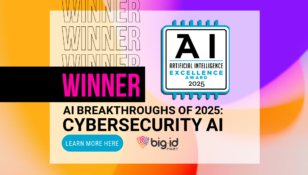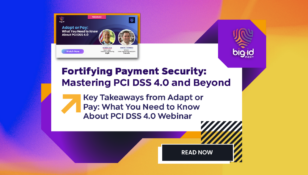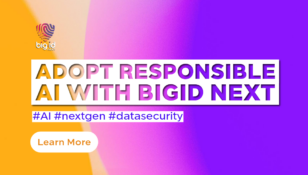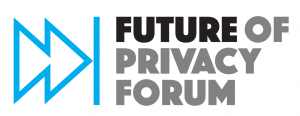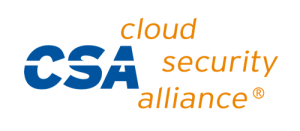Healthcare Cybersecurity: 8 Data Protection Best Practices

Healthcare organizations need to look beyond compliance to reduce risk, implement robust data management, and achieve a data protection program that balances safeguarding patient data with providing the highest quality of patient care.
Healthcare Data Security Challenges
Patient data — or protected health information (PHI) under HIPAA (the Health Insurance Portability and Accountability Act) — is not only some of the most sensitive data out there, but it’s also some of the most targeted by malicious attackers.
Organizations need to mitigate risk across their entire organization, properly protect patient information, and unlock value from their data — while complying with a soaring volume of complex and overlapping regulatory requirements, like HIPAA, HITECH, CCPA, GDPR, U.S. state laws, and many more.
Data Security Best Practices
Using BigID’s automated data intelligence platform, deep machine learning, and extensible app framework, healthcare companies can establish, operationalize, and enforce best practices to secure and manage their data.
- Discover All Your Data — Patient Data, Dark Data, Regulated Data, and More
A deep discovery foundation is the first step that all healthcare organizations need to take to set up robust programs for privacy, security, and governance across the enterprise. You can’t protect what you don’t know you have, so BigID discovers all of your data — across all types, in any language, at petabyte scale, in the data center or the cloud. - Leverage Next-Gen Data Classification
Automatically classify PHI beyond pattern matching and regular expressions (RegEx). BigID takes an ML-based approach to automatically classify and tag all sensitive, regulated, and high-risk data — by regulation, document type, policy, attributes, person, and more. - Define Policies to Retain or Discard Data
Apply internal and external policies for data retention rules and regulations. Automate workflows to act on data aging, tag what data to keep, define how long to keep it, and mark over-retained data for deletion. - Protect Critical Data
Proactively identify and safeguard patient and critical data; delete redundant, obsolete, or trivial (ROT) data to minimize risk; and identify data with legal holds to comply with regulatory requirements. - Remediate High-Risk Data and Manage Remediation Workflows
Remediate sensitive, critical, and regulated data – and leverage remediation workflows to delegate decisions to the right people. Review findings and violations across all your data sources and across structured and unstructured data. Prioritize and assign findings to the individuals most qualified to make decisions on that data, and take actions to remediate high-risk data. - Monitor File Access
Get high-level permission analysis around targeted datasets based on category and type, and identify users with access to large, sensitive datasets for further investigation. Identify and remediate overexposed data to reduce risk and protect personal information across your enterprise data stores. - Simplify Incident Response
Accurately determine impacted users following a data breach and operationalize your incident response plan. With BigID, users can quickly and accurately understand whose data was impacted by a data incident — loss, theft, or misuse — and identify which personal and critical data sets have been affected. - Assess and Score Risk
Proactively reduce risk on your most sensitive data. BigID provides a risk-centric view of personal data so organizations can be proactive in reducing risk. Organizations can score risk based on a variety of data parameters like data type, location, and residency.
Reduce Risk Across the Entire Organization
Healthcare companies that proactively implement best practices for protecting patients’ sensitive data will reduce risk across their entire data landscape.
With BigID’s ML-based technology, healthcare organizations get full visibility and complete coverage on all their sensitive, regulated, and high-risk data to achieve continued compliance with privacy and protection regulations — and reduce their risk of costly data breach incidents.



